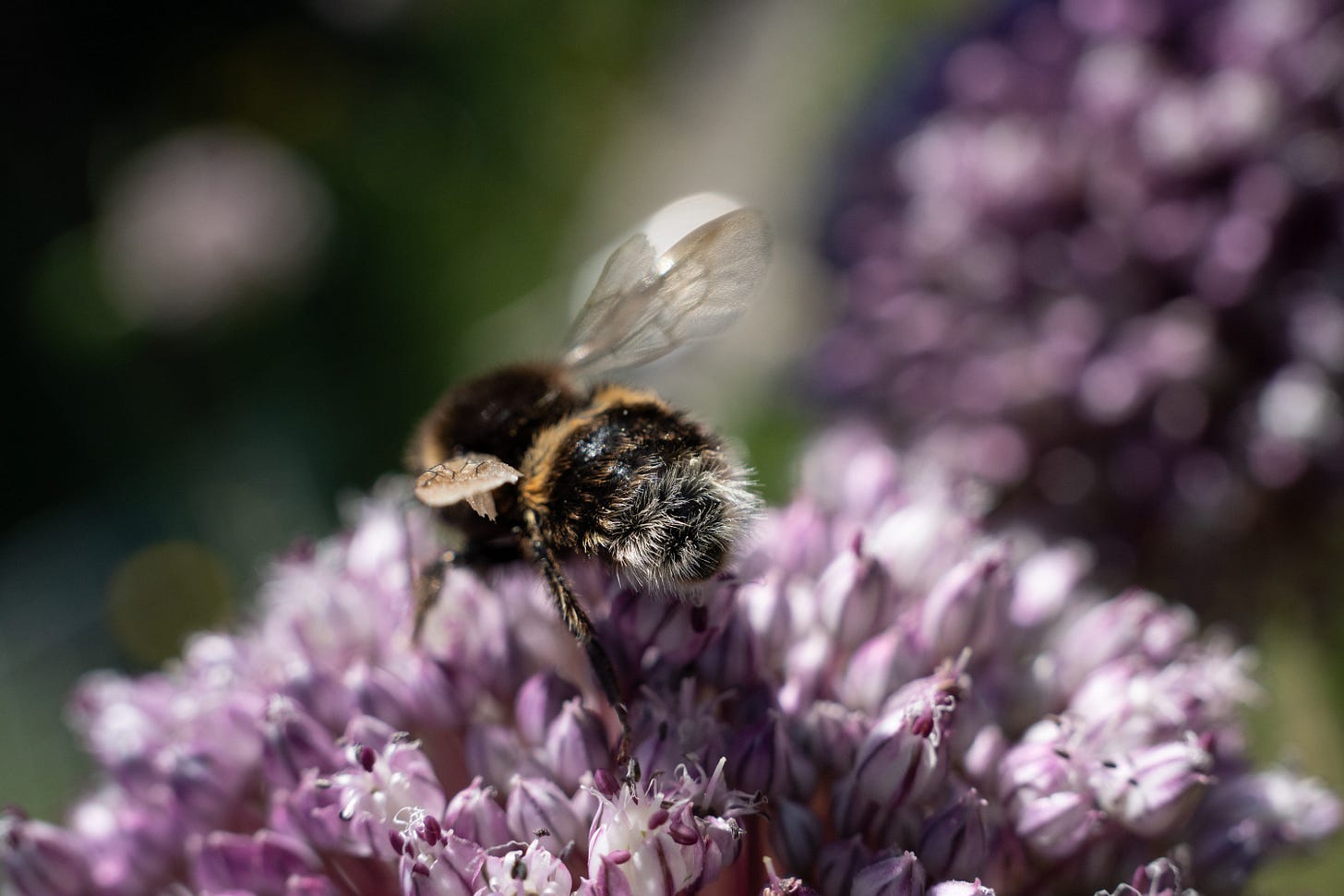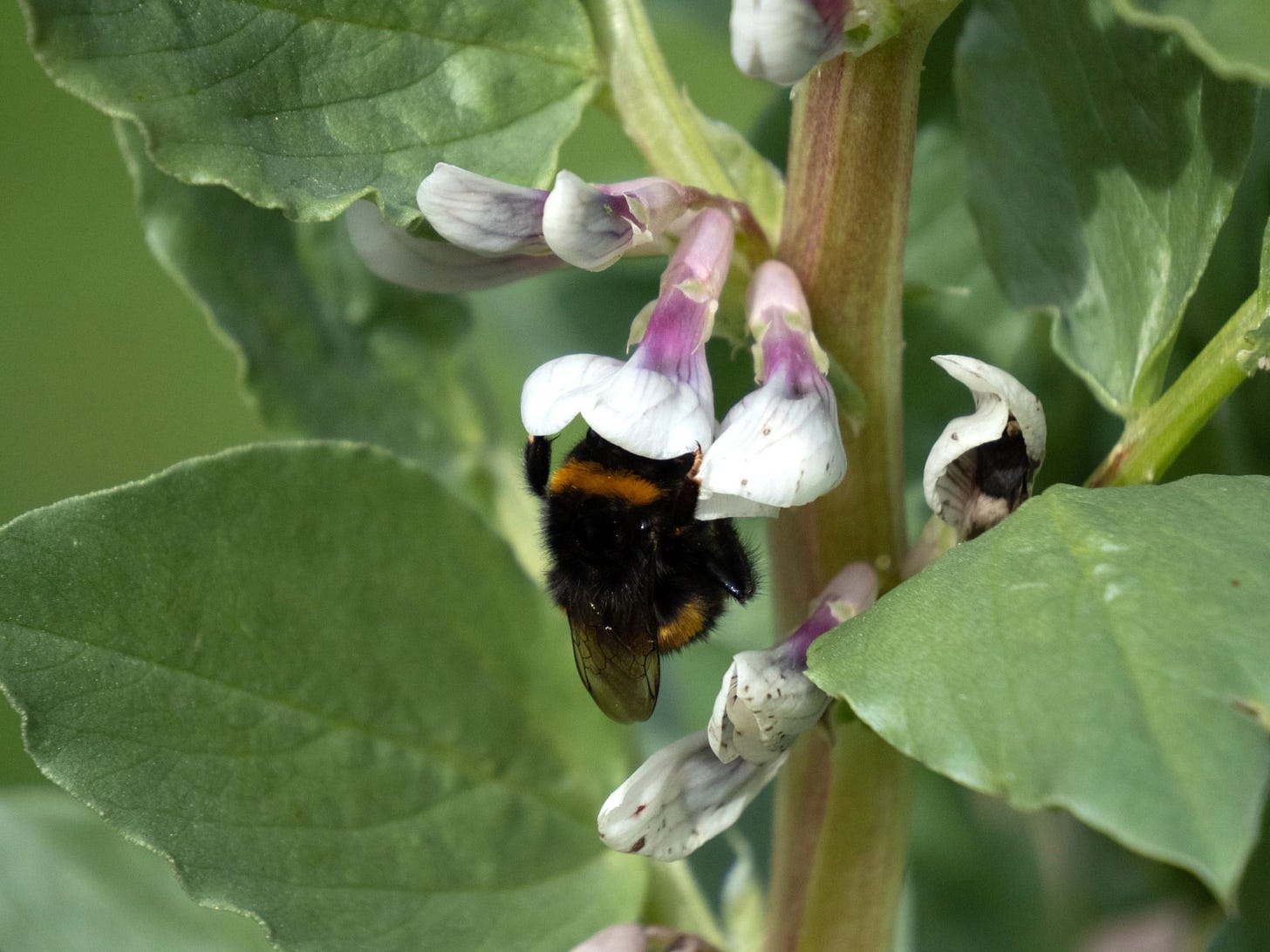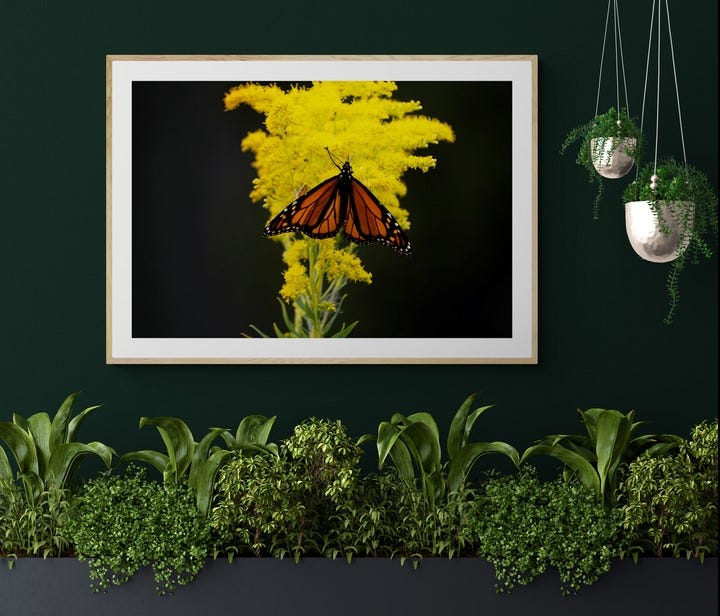Kia ora e hoa - hello my friend☀
I am into week two at our pop up exhibition in Ōamaru, and feeling a little bit less sleep deprived & frantic! Today I have the day off, the sun is out and it is looking like a warm day so I will get to enjoy the garden.
While I was busy setting up our show, the fruit trees have blossomed and the bees are out. We’re a week away from the official start of spring, and it certainly feels like it!
The Buff-Tailed Bumblebee
Bombus terrestris is the scientific name for our “large earth” bumblebee (or, my favourite name, the “buff-tailed” bumblebee, after their fluffy white bum). They’re the most common bumblebee in Aotearoa, but were only introduced here in the late 1800s, to help pollinate red clover.
Before the invention of nitrogen fertiliser, red clover was grown to supply nitrogen, an essential nutrient for leafy plant growth and important for pastural fields. Plants in the legume family – like peas, beans, and clover – have small nodules on their roots which help ‘fix’ nitrogen in the soil. So, if you have clover in your garden lawn, it will help your grass to grow. It’s also a host plant for our native blue butterflies.
Farmers at the time needed to re-sow their pastures each year, and if they weren’t able to get the clover flowers pollinated then the seed wouldn’t set, and they would have to pay for it to be imported from England. Instead, they paid a sum of 300 pounds to ensure the introduction of bumblebees to New Zealand, via the acclimation society.
As the weather begins to warm up, you will start seeing more buff-tails around – along with our other pollinating insects like butterflies, moths, flies, and honeybees. Bumblebees are often first on the scene as they are better equipped to handle the cooler temperatures, in part due to their fuzzy exterior.
Bumblebees are excellent pollinators because their proboscis (tongue) is longer than honeybees’ and can get into tubular flowers. Bumblebees can do the work of 50 honeybees, and in an enclosed glasshouse can pollinate a whopping 450 flowers an hour.
Happy spring,
Zenobia x
If you’d like to bring a bit of nature into your home, you can purchase fine art photography prints featuring some of my favourite local wildlife.
The Weekly Wildlife newsletter is free, but if you’d like to support my work & receive member-only posts, join with a monthly or annual subscription.
If you would like to support The Dwindle River Garden with a one-off donation, tap the button below.










I am always learning something from your posts, Zenobia! Thank you, you write beautifully
Thank you, Jacqui. There is always so, so much more to learn🐝